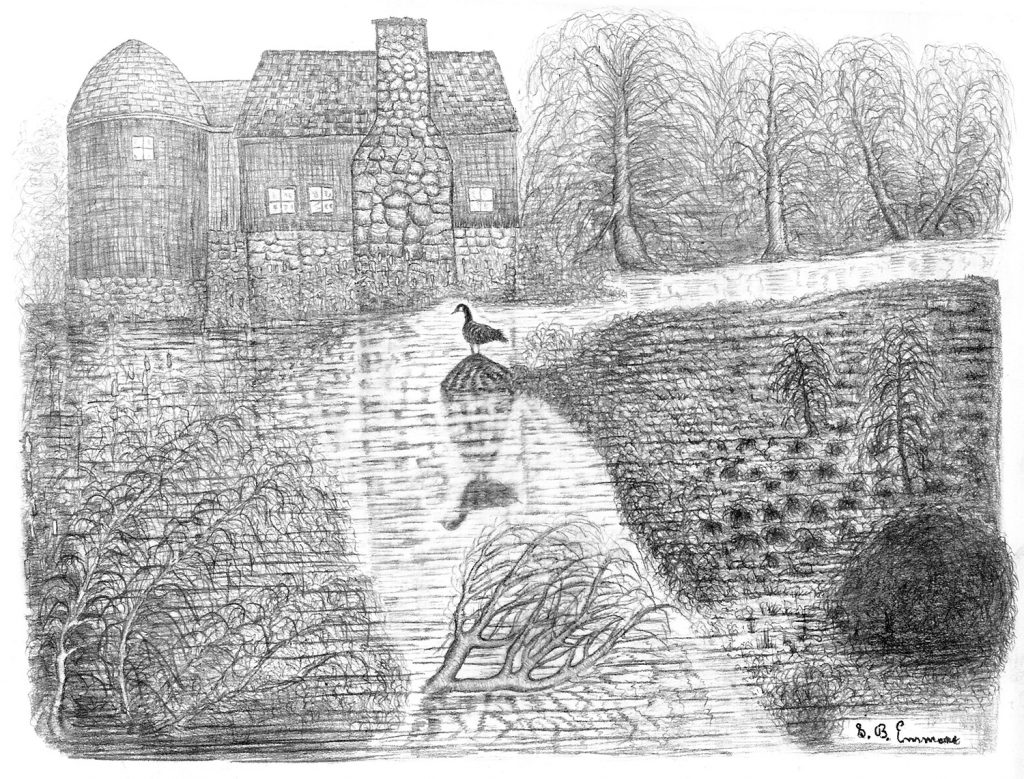Jose Araujo, 15 Elizabeth Drive, represented by engineer Rick Charon and wetlands scientist Bob Gray came before the Rochester Conservation Commission on March 5 with conceptual restoration plans for the former Boy Scout Camp on Leonard’s Pond.
On January 15, the commission issued a cease and desist order to Araujo for illegal cutting of trees and shrubs within the 25-foot no touch zone and the 100-foot buffer zone of the bordering vegetated wetland and bank of Leonard’s Pond. Now he was before the commission with restoration plans and a ‘mea culpa.’
With hundreds of trees and shrubs now removed from the pondside property, Gray discussed the replanting of 150 trees, both hardwoods and pines, as well as some 250 shrubs. He also made it clear what the reality of such a massive restoration plan meant in terms of timing and execution. Gray also shared some creative ways of returning the site, if not in whole at least in part, to its former condition.
With the plantings, Gray said, time is of the essence. He explained that April was the ideal time to undertake the plantings, a time when weather conditions were most conducive for the trees and shrubs to establish themselves before the heat of summer becomes an issue.
Gray also said that it might be viable to relocate trees from within the nearly 26-acre site from one location to the restoration areas. He said that plants already well established on the site were more likely to reestablish themselves in conditions they were habituated to. But he also said that the contractor doing the work could not be a garden variety landscaper, it had to be someone with the knowledge and skills to do the job without creating more disturbances on the property.
Gray cautioned the commission that nursery stock might not be easily established and hoped that the commission would sanction use of some trees and shrubs from the site.
Gray also discussed the necessity of watering all the new planting, the possibility of an irrigation system, and pending discussions with the Board of Health for the drilling of water wells.
While discussing the location of plants in the restoration plan, Gray reminded the commission that Araujo planned to build a home on the site and therefore some areas that appeared prime locations for restoration would only come under the ax at a future point in time. So he felt it was best to try and stay clear of a location where a house might be built.
The group spent an hour discussing best practices and plans for the restoration. Before continuing the hearing, Araujo asked if he could speak. Chairman Michael Conway acknowledged him.
“I want to apologize for the way I went about this, not knowing what I was doing,” Araujo stated. “The whole idea was to plant wild flowers for my bees.” He said he would cooperate with the commission and offered to return with plans that showed where a future home might be erected if the commission wanted to see that. He was advised that that would not be a good idea.
The hearing was continued until March 19, at which time a final plan is expected containing the location for all plantings, relocation of trees from areas of the site, name of contractor for the project, and seasonal reporting on the overall restoration over two or three growing seasons.
Earlier in the evening, the commission approved an Abbreviated Notice of Resource Area Delineation filed by Steve Long of Borrego Solar Systems for property located at 75 Vaughan Hill Road, related to the development of a solar array field.
They also conditioned a Notice of Intent filing from Schoen and Bonnie Morrison for 15 Cranberry Highway to redevelop an existing commercial property into a daycare and event rental space.
A Notice of Intent filing by Sofia Darras for 565 Rounseville Road was continued until March 19.
The next meeting of the Rochester Conservation Commission is scheduled for March 19 at 7:00 pm at the Rochester Town Hall.
Rochester Conservation Commission
By Marilou Newell
